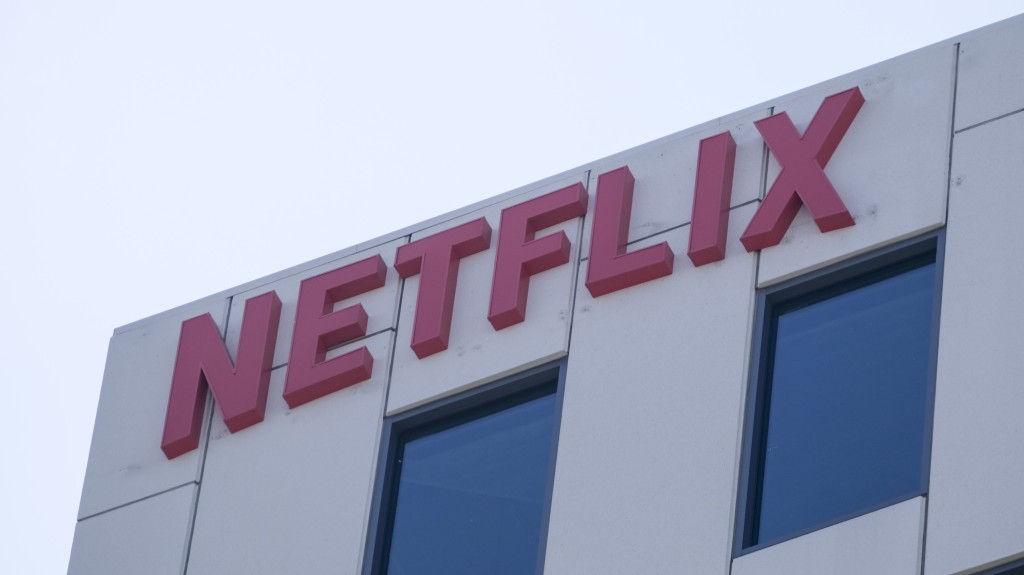Netflix has held Madison Avenue at arm’s length for years. Now, the popular streamer wants to draw the advertising industry in a tighter embrace.
After years of resisting the prospect of running commercials, Netflix signaled on Tuesday that it’s ready to consider launching an ad-supported tier of its service, which has lured traditional TV viewers with ad-free series like “Stranger Things” and “Ozark” and commercial-free movies like “Don’t Look Up.” Figuring out an ad strategy could take months, said Reed Hastings, Netflix’s co-CEO, during an investor meeting, “but think of us as quite open to offering even lower prices with advertising as a consumer choice.”
The company announced its intention to court commercials just weeks before the start of the industry’s annual “upfront” ad sales season, when U.S. TV networks try to sell the bulk of their commercial inventory for the next programming cycle. Few buyers expect Netflix to vie suddenly for ad dollars with Disney, Fox, NBCUniversal, Warner Bros. Discovery and Paramount Global.
“It would be a very quick turn,” says Mike Law, CEO of Carat the large media-buying unit owned by Dentsu. “They have a significant footprint of users, so it’s not like they’re one of the newcomers, where they haven’t formed a sizable subscriber base. They have a huge amount of reach, so that’s a positive. But what does their ad model look like? How much audience data are they willing to share? Building the infrastructure would take some time.”
The company would join a chase for ad dollars that other streamers have already begun. HBO Max, part of the newly-merged Warner Bros. Discovery, has already expressed its willingness to run commercials before some HBO movies. Disney+ has already said it intends to launch an ad-supported tier and is likely to offer more details at the start of the upfront. Hulu has begun to reach out to local and regional advertisers, not just the big national marketers coveted by major media outlets. Many of the new streamers, conscious that Netflix is commercial free, have been loath to run as many ads as consumers see on traditional TV. But Netflix’s announcement may spur them to get more aggressive, says Brian Wieser, global president of business intelligence for GroupM, the large WPP-owned media-investment firm.
“There has been a meaningful reduction in advertising inventory in streaming,” says Wieser. “There is just not a lot of available ad inventory on HBO Max.”
But in a world where Netflix decides to offer commercials to a tier of subscribers, he asks, will rivals feel they have new freedom to “push up the ad loads? Does this news give them more flexibility to do that?”
Love Film & TV?
Get your daily dose of everything happening in music, film and TV in Australia and abroad.
The decision underscores how much pressure streaming-media companies are under to demonstrate subscriber growth — or find new ways of monetization when new subscribers can’t be won. Netflix disclosed that it lost 200,000 subscribers in the first quarter and is expecting to shed two million in the second. But all the companies in the streaming wars face a new hurdle.
“Consumers are saying, ‘I can’t afford that any more. I just can’t keep paying another few dollars every few months,’” says Law. And the media companies “can’t keep creating the amount of content they do, because there’s so much competition at this point.”
Netflix has become known for taking big creative swings, but when it comes to advertising, it might need to tread lightly. As a pioneer in the field of streaming, the company has carved its own path for years. In choosing to sell ads, however, it would vie with competitors who have decades-old ties to big ad spenders like Apple, Procter & Gamble or State Farm. To win their ad millions, Netflix might have to be more transparent about how many subscribers watched each of its shows and for how long. Long accustomed to eating at its own table, Netflix would, like its new ad-supported rivals, have to follow the rules of someone else’s establishment.
Netflix does have some experience with marketers. In recent years, the company has reached out to popular marketers like Coca-Cola, Diageo’s Tanqueray and Procter & Gamble’s Old Spice. The offer: Help Netflix gain attention for new show launches and align your products with some of the most popular pieces of pop culture. To do so, however, the advertisers have had to take big swings. Late last year, P&G launched a commercial featuring characters from the Netflix series, “The Witcher” singing a bawdy tune about how much people from the world of the show smell. The company even devised new deodorants with scents like “Smell of Surprise” or “Yennefer’s Underarm.”
In 2019, Netflix spurred Coca-Cola to revive New Coke, the much-scrutinized product that languished after its debut in 1985, in a concept that paired the beverage with “Stranger Things.” And last month, Tanqueray helped call attention to a new season of the popular Netflix series “Bridgerton.”
None of these deals, however, involved commercials that ran on Netflix. Advertisers have been willing to work with the streamer because they want to gain the interest of groups of consumers who like those shows. In an era, when large audiences are harder to find, the marketers have determined that an association with the show is worth more than the need to surround it with traditional advertising.
How Netflix tries to bring advertisers even closer to its content will no doubt be watched closely. “As long as I’ve paid attention to them, they have been absolutely allergic to ads,” says Wieser. “Even a willingness to just try it is significant.”
From Variety US































